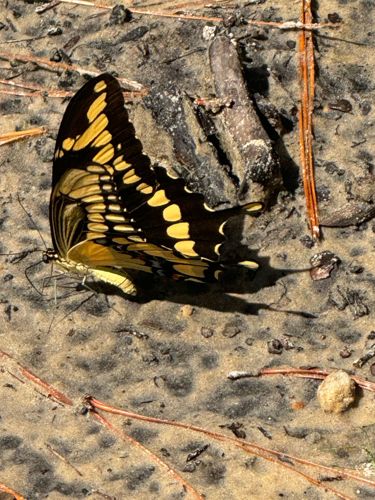Eastern Giant Swallowtail
Scientific Name: Papilio cresphontes
Order & Family: Lepidoptera (Order), Papilionidae (Family)
Size: Wingspan of 10 to 16 cm (4 to 6.3 inches), making it the largest butterfly in North America.

Natural Habitat
Woodlands, citrus groves, open fields, suburban gardens across North America, typically in areas with host plants for caterpillars (citrus, prickly ash, hop tree).
Diet & Feeding
Adults primarily feed on nectar from a wide variety of flowers. Caterpillars feed on the leaves of host plants, particularly those in the citrus family (Rutaceae).
Behavior Patterns
Adults are active during the day, often seen flying purposefully or nectaring. Females lay single eggs on host plant leaves. Caterpillars are cryptically colored, resembling bird droppings to deter predators. They also possess an osmeterium, a retractable, forked organ that emits a foul odor when threatened. They undergo complete metamorphosis.
Risks & Benefits
Generally beneficial as pollinators for various plants. Caterpillars can be considered a minor pest in commercial citrus groves due to defoliation, but rarely cause significant harm to mature trees. They pose no direct risk to humans.
Identified on: 9/26/2025